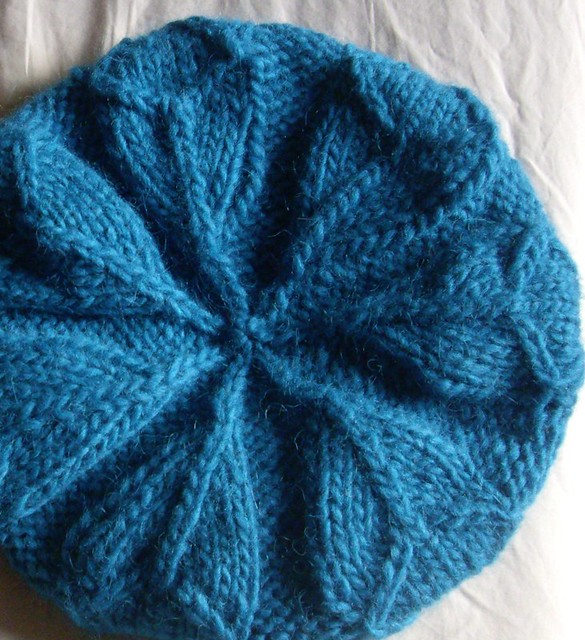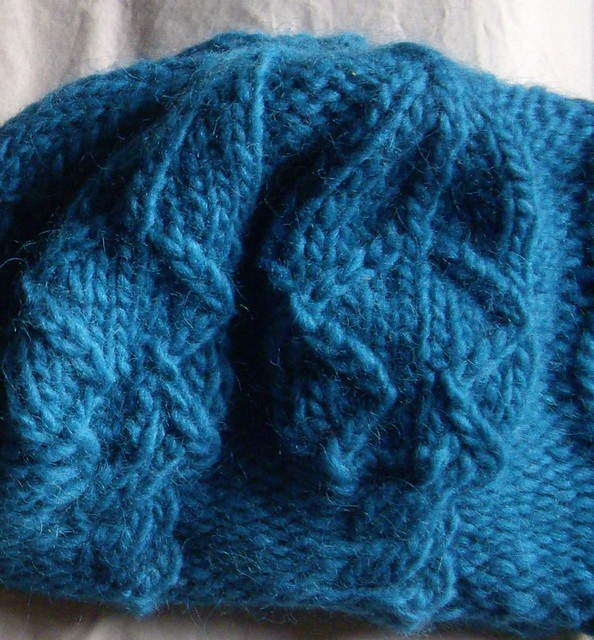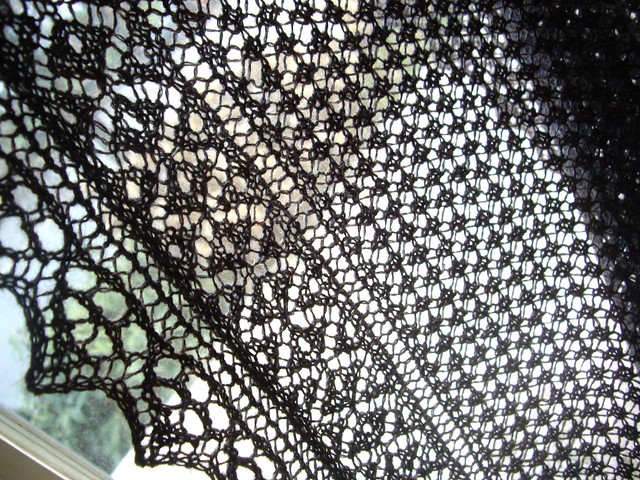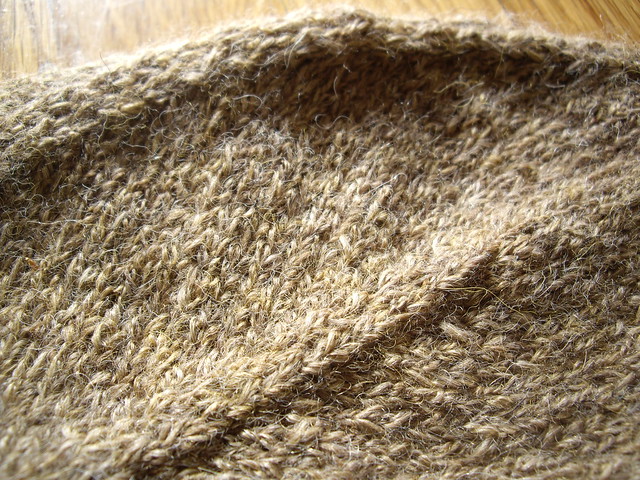
 Dead in the Family by Charlaine Harris - sex, vampires, sex with vampires. Sadly, this is the most recently published 'Sookie bookie' so I'm joining the legions waiting for the next installment.
Dead in the Family by Charlaine Harris - sex, vampires, sex with vampires. Sadly, this is the most recently published 'Sookie bookie' so I'm joining the legions waiting for the next installment.Sweater Quest: my year of knitting dangerously by Adrienne Martini - I picked this up on impulse from the library's 'just passing through' shelf (books borrowed from other branches and returned to my library). Well, how could I not pick up a book about knitting, and knitting dangerously at that. This was a great book, I loved it. I really related to the author who records her year-long quest to knit a very complicated Alice Starmore design called Mary Tudor, an absolute feat of stranded colourwork. And why does she do this? Just to test and prove that she can - the ultimate in process knitting
Speaking of process knits, here is the latest incarnation of my In the Pink:
 I've doubled my progress, just in the reverse direction. My dissatisfaction with this shawl, which had been slowly growing, took over when I completed two of the 105 edging repeats and realised, 'no, this is not going to happen'. The dissatisfaction was really discomfort with my uncertainty about the stitch counts.
I've doubled my progress, just in the reverse direction. My dissatisfaction with this shawl, which had been slowly growing, took over when I completed two of the 105 edging repeats and realised, 'no, this is not going to happen'. The dissatisfaction was really discomfort with my uncertainty about the stitch counts.To digress a moment - this is a fabulous design. It's gorgeous, the construction is fascinating and the pattern is generously made freely available by the designer. I think that if made precisely as written, it would be very satisfying.
Still digressing: the issue I sometimes find with independently published patterns is that there is not necessarily any standardisation of the instructions or terminology or explanations. I think that this written pattern (there are no charts) is very much an expression of the designer's thought patterns and as such is somewhat idiosyncratic.
So back to my discomfort - the problem was that in the instructions for the centre swirl there are directions for doing a larger size by adding eight more rounds of knitting. I am tall and broad shouldered and took this option. There are, however, no further instructions in the pattern for the larger size; the knitter is required to figure out the numbers for the side wings and border and edging. Ok, that's not such a big deal except that this requirement is not made explicit at any point in the pattern and I wouldn't have realised that I needed to do various extra rows had I not read a knitalong forum on Ravelry. It's possible that had I thought about it enough (and when you understand the construction it does become clear) or sketched it out that I would have realised but by the time I was deep into it, i didn't really care to.
Anyway, the absence of any stitch counts for the larger variation left me a bit in the dark and uncertain that I was getting it right. And getting it right is important to me. Yes, I could have fudged it but that is not how I knit and once that uncertainty had crept into this project, it was, alas, doomed. And after I had figured out the construction by doing, I decided that I didn't want a frilly pink shawl anyway.
Flatliner
Pattern: In the Pink by IzzyKnits
Size: I tried for the larger size.
Yarn: Lorna's Laces Shepherd Sock Yarn in colourway 'Manzanita'.
Needles: 3.5mm.
Stash/recycle content: I had two skeins of this in the cupboard. I then had to buy two more skeins in order to have enough yarn for the edging. Unfortunately, the two extra skeins were a different dyelot and really didn't match - also part of my decision to frog this project.
Start to finish: 1 March to 21 December 2010 in fits and starts: centre swirl, 1 March to 11 March; left side, 17 to 18 July with extra rows 5 to 6 December; right side, 3 to 5 December.
Verdict: This is a fabulous design and a pattern for experienced knitters who can independently figure out any variations.



































